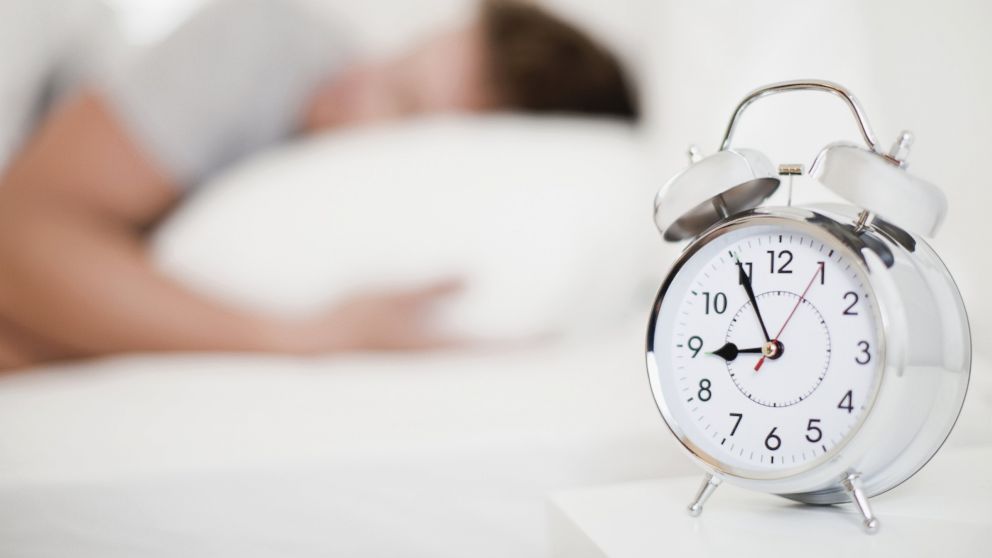How to Deal With the End of Daylight Saving Time
Get ready to turn back the clocks.

— -- intro:If you’ve been starting your day in near-total darkness each morning, relief is in sight: November 2 marks the end of Daylight Savings Time (in most of the country) and the day when your clocks “fall back” an hour. That means you’ll get a bonus hour of light in the morning, but lose an hour in the afternoon.
Although the prospect of leaving work when it’s dark out may be depressing, sleep specialist and clinical psychologist Michael Breus, PhD, reminds us to count our blessings. “Believe it or not, people have an easier time adjusting to this time change than to the one in March,” Breus says. “That’s because we gain an hour of sleep in the fall, but end up losing an hour when we ‘spring ahead.’”
Here, how to make the transition to Standard Time as seamless as possible, plus some silver linings to the time change.
quicklist: 1category: 5 Ways to Deal With the End of Daylight Savings Timetitle: Don’t change your routine on November 1url:text:The night before the time change, just go to bed when you usually do, Breus advises. “Most people are already sleep deprived, so in all likelihood you could use the extra hour of sleep you’ll get,” he says. “Think of it as your own little hour-long staycation.”
10 Weird Causes of Winter Depression
quicklist: 2category: 5 Ways to Deal With the End of Daylight Savings Timetitle: Use it as a sleep hygiene checkupurl:text:You can use the time change to diagnose your sleep habits. Before bedtime on November 1, set your clock back an hour (cell phones will be updated automatically at 2am), and keep your alarm set for your regular wake up time. “If you find yourself sleeping for the entire extra hour in the morning, that’s a sign you’re sleep deprived,” Breus says.
If, on the other hand, you wake up before your alarm goes off, that’s your body telling you that you’re getting enough sleep. “The fall time change is a once-a-year opportunity to calibrate your ideal bedtime.”
14 Reasons You're Always Tired
quicklist: 3category: 5 Ways to Deal With the End of Daylight Savings Timetitle: After the time change, maximize your sun exposure…url:text:Even after the fall back, it’s not uncommon to feel out of sorts the first few days of November. It doesn’t help that the sun will start setting close to 5pm. So what should you do?
While your afternoon mood might take a hit because of the looming darkness, Breus advises taking advantage of the extra sunlight in the morning, which can give you a mood boost to start the day. If you tend to work out in the evenings, switch your routine to the morning. At the very least, make an effort get outside during your lunch break, if only just to take a walk around the block.
quicklist: 4category: 5 Ways to Deal With the End of Daylight Savings Timetitle: …and maybe boost your indoor lighturl:text:If you’re still feeling draggy in the afternoon after a few days, consider investing in a light therapy box, which can counteract your brain’s inclination to start producing melatonin when the sun goes down. Just be sure to look for one that provides alertness-promoting blue light. “Blue light mimics sunlight and tells the brain to stop producing melatonin, the chemical that starts your brain’s sleep engine,” Breus explains.
If you need a little burst to get over that 4pm hump at work, click on the light and let it shine for no more than 20 minutes. “That amount should be enough to make you feel more alert for a couple hours,” Breus explains. If you want to get to bed at a reasonable hour, be sure not to use the light after 7pm; any later than that can interfere with your sleep.
Breus likes the Philips goLITE BLU ($137, amazon.com), but Amazon has a range of light therapy box styles and sizes. Don’t want to buy another gadget? Definity Digital by LightingScience makes alertness-promoting bulbs you can install in most household fixtures ($70, amazon.com).
7 Signs of Seasonal Affective Disorder
This article originally appeared on Health.com.




